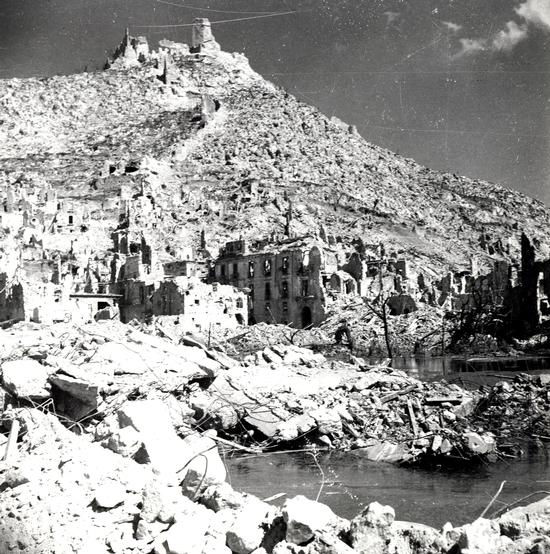The Day of Battle: Book Review
- Mike
- Oct 5, 2023
- 7 min read
Updated: Aug 10, 2024

The Day of Battle is the second book in Pulitzer Prize winning author Rick Atkinson’s Liberation Trilogy and it carries the sub-title ‘The War in Sicily and Italy’ because the entire book describes the progress of the American and British armies in the southern half of Italy from May 1943 until the liberation of Rome thirteen months later.
There was much fighting still to be done in Italy in the remaining year of the war that is not covered here but the 5th Army’s arrival in Rome coincided with the Normandy landings on D-Day and from that point on the main focus of the Allied armies, as well as the author in his third book, 'The Guns at Last Light', switched to France and the long march to Berlin.

When you reach the end of this 588 page book it’s hard to believe that spending 608 days fighting their way the entire length of the Italian peninsular while suffering 312,000 casualties was a worthwhile result for the Allies.
The strategic objectives in targeting what Churchill had mistakenly described at the outset as “the soft underbelly of Europe” were to tie down a significant portion of the German army to relieve the pressure on the Eastern front and to obtain airfields from which to strike Germany’s oil refineries and supply lines in Romania, and to a lesser extent bomb Germany itself.
But despite the vast diaspora of southern Italians that had emigrated to the US in the decades preceding the war, somehow the Allies did not understand or reckon with the mountainous Italian terrain and the winter weather giving such a massive advantage to German defensive positions, as the Bernhardt Line, Gustav Line and then much later the Gothic Line so expensively demonstrated. Nowhere more so than Montecassino.
And by the time the Allies captured Rome there were only 22 German divisions tied down in Italy while 157 were fighting on the Eastern Front and a further 60 elsewhere in western Europe. Which is why one military expert later called Italy the most senseless strategic campaign of the whole war.
But where else were the Allies to take half a million men and their equipment from North Africa in July 1943 in order to engage the enemy on land and relieve the pressure on Russia? And how in fact would they have been able to transport them safely a much longer distance than the 100 miles to Sicily? These are some of the ‘what ifs’ of history.

I’ve read all three of Rick Atkinson’s books in this trilogy and all are equally absorbing because his very readable style is to narrate the known history through the experiences of the individual soldiers and he doesn’t shrink from exposing the chaos, confusion and downright incompetence displayed throughout the various campaigns.
As The Day of Battle progresses you come to know the main characters as much through their correspondence as through their conduct and interactions in the field and the 176 pages he devotes to notes, selected sources and acknowledgements at the back of the book demonstrate the enormous amount and variety of research conducted by the author in order to tell this story in the most accurate and illuminating way possible.
It is something of an American-centric account of the war despite the roughly equal amounts of American and British (including Commonwealth) forces deployed in Italy but this aspect does not detract from the narrative and the author is very fair in his analysis of the relative strengths and weaknesses of the British and American generals.
The book opens in May 1943 by framing the strong disagreement between the British and American high commands regarding the overall European war strategy once the planned invasion of Sicily was accomplished and this lack of real consensus or conviction at the very beginning of the land war set the stage for a muddled and slightly ad-hoc campaign. The British conviction that the Germans would only aggressively defend Italy north of the Po river could not have been more flawed.
Part One of the book covering 175 pages deals with the Sicily landings and the subsequent capture of the island in only 40 days. A complete success, if you ignore the inexcusable escape of German personnel and materiel across the Strait of Messina, it was achieved with remarkably few lives lost due in part to the success of a clever intelligence ruse know as Operation Mincemeat involving Ian Fleming, later of course to acquire fame as the creator of James Bond. Operation Mincemeat was the subject of a decent but slightly lightweight film in 2021 with Colin Firth leading the cast.

Part Two of the Day of Battle from pages 175 to 250 describes the near disaster of the September 1943 Salerno landings south of Naples where just about everything went wrong. A failure of both planning, execution and generalship which was destined to be repeated at Anzio. Italy by this time was out of the war as an enemy combatant and the Germans were in full control of the peninsular.
In Kesselring the enemy had arguably the most able general on either side though it was under his direct orders that so many atrocities were later committed in the Apennines and he was indicted as a war criminal in 1947 and sentenced to death at a court in Venice.
The Italian government refused to carry out the sentence, having abolished the death penalty in 1944, and he was transferred to prison in Germany from which he was prematurely released in 1952. The Italian parliament and surviving partigiani protested vigorously to no avail, so perhaps Italy should have executed him when they had the legal right to do so.
It's worth noting here that for 65 years after the war Germany steadfastly refused to ever extradite any of their citizens accused of the dozens of civilian atrocities perpetrated in Italy during the war and likewise France has always refused to extradite any of the Brigate Rosse terrorists convicted of assassinations during the 1970s anni di piombo, including the recent decision of the highest French Appellate Court in March 2023. The European Union has proven time and time again to only function as a union when it suits France and Germany.

The remainder of Part Two up to page 318 describes the heavy cost to the Allies and Italian civilians alike of the rainy season offensive in the early winter of 1943. They were up against seasoned German troops well prepared and entrenched in perfect defensive positions on the higher slopes of Monte Lungo, Monte Rotondo and especially Monte Sammucro at 4,000 feet, below which the battle for San Pietro took place.
It lasted for over a week with the starving residents sheltering in caves and resulted in the complete destruction of the town. The famous film director John Huston was present to film the conflict though most of it had to be subsequently re-enacted to eliminate the chaos and soften the reality for publicity purposes. San Pietro itself was left as a ruin and as a reminder, and the town was subsequently rebuilt a little lower down the mountain.
The seven mile stretch to cross the Bernhardt Line took the American 5th army six weeks at a cost of 16,000 casualties. The Gustav Line was still ahead of them and directly in their path was the most fortified town in Italy, Cassino, shortly to become a household name. Meanwhile the British 8th army attacking the Bernhardt Line in the east also made slow costly progress hampered by winter rains, swollen rivers and stubborn resistance culminating in house-to-house combat in the destroyed town of Ortona on the Abruzzo coastline.

In Part Three, from pages 321 to 432, the Allies fortunes do not improve much because it’s still winter and they are still in the mountains south of Rome. The first disaster was the poorly planned Rapido river crossing where the mostly Texan 36th Infantry Division suffered so many casualties in a futile exercise that Texas successfully demanded a Congressional investigation after the war.
The second disaster was the aftermath of the very successful and virtually unopposed Anzio amphibious landings. Although this was one of Churchill's better ideas, the lack of sufficient strength in numbers and overly cautious leadership in the field all but obliterated two battalions of US Rangers and allowed the Germans time to regroup and reinforce. As a result the Allies were trapped in the Anzio beachhead for 4 long months unable to attack the rear of the Gustav line to relieve the carnage taking place at Cassino.

The problems at Anzio and Cassino occupy the next 100 pages of this book in Part Four and even the capture of Rome itself was not without controversy when the 5th Army Commander, Mark Clark, took it upon himself to dash for the glory of Rome rather than trap a significant portion of the German 10th army.
Allowing enemy forces to escape was a common Allied failing throughout the Italian campaign and would be repeated in Normandy only two months later in the Falaise pocket.
In a tribute to the skill of the author, the military historian David T Zabecki included the following in his review of this book in 2018:
“I met Rick Atkinson in November 2006, when the commander of the U.S. Army in Europe, General David D. McKiernan, invited him to participate in a battlefield staff ride to Anzio, Cassino, the Rapido River and the Liri Valley. The staff ride was a high-level training exercise for the army’s senior generals in Europe and the purpose of the exercise was to use the lessons of the Italian campaign as a laboratory in which to evaluate the current American experience with coalition warfare since 2003.
For three days we stood on the battlefields that had soaked up so much blood 60 years ago and tried to put ourselves inside the heads of our predecessors at the general officer levels of command. These were some high-level and extremely complex discussions. Throughout, Rick Atkinson took furious notes, posed questions and made contributions as an authoritative and fully accepted peer. There can be no better testimony to the level of his credibility with today’s professional soldiers. During one of our evening synthesis sessions, he held us spellbound with a summary of his key conclusions from the book, which was then almost a year away from publication”.


